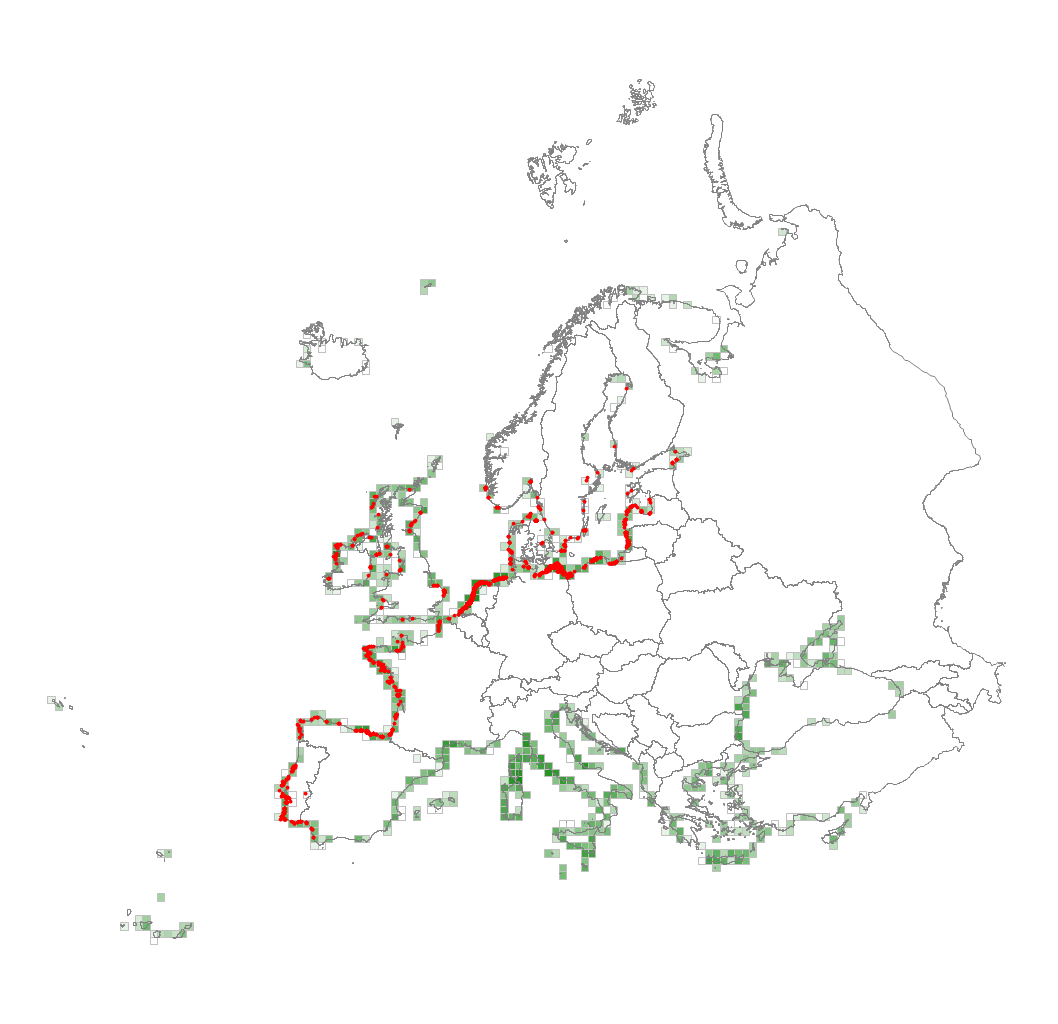N15 Atlantic and Baltic coastal dune grassland (grey dune)
Grasslands that develop on the stabilised sands of older (grey) dunes along the Atlantic (southern to middle Portugal), North Sea and Baltic coasts. The sandy substrate, thinly enriched with accumulating humus, is well-drained and can dry out during summer. Typically with a more or less complete cover of (relatively low) grasses, herbs, bryophytes and lichens, sometimes with low shrubs, they comprise one of the most species-rich habitats on the temperate European coast. The flora can vary with the regional climate, with the character of the substrate, from acid to highly calcareous, and with the local dune topography. Individual dune systems can vary from narrow strips to enormous stretches, though most are not a dynamic stage in succession, but maintained in a more or less stable fixed state. They were often grazed or mown in the past, and missing dune fixation prevented the development of dense, tall grasslands as well as scrub and woodland. The habitat is threatened in most countries by the abandonment of traditional farming, by eutrophication through nitrogen deposition, overuse and urbanisation, often related to tourism.
Chytrý M., Tichý L., Hennekens S.M., Knollová I., Janssen J.A.M., Rodwell J.S. … Schaminée J.H.J. (2020) EUNIS Habitat Classification: expert system, characteristic species combinations and distribution maps of European habitats. Applied Vegetation Science 23: 648–675. https://doi.org/10.1111/avsc.12519
Version 2025-10-03, https://doi.org/10.5281/zenodo.16895007.
For the official presentation of the EUNIS Habitat Classification from the European Environment Agency, please see: EUNIS Terrestrial Habitat Classification 2021. The FloraVeg.EU presentation may show modifications and partial updates to the habitat classification.

1.jpg)
2.jpg)
3.jpg)
4.jpg)
5.jpg)
6.jpg)
8.jpg)
2.jpg)
1.jpg)